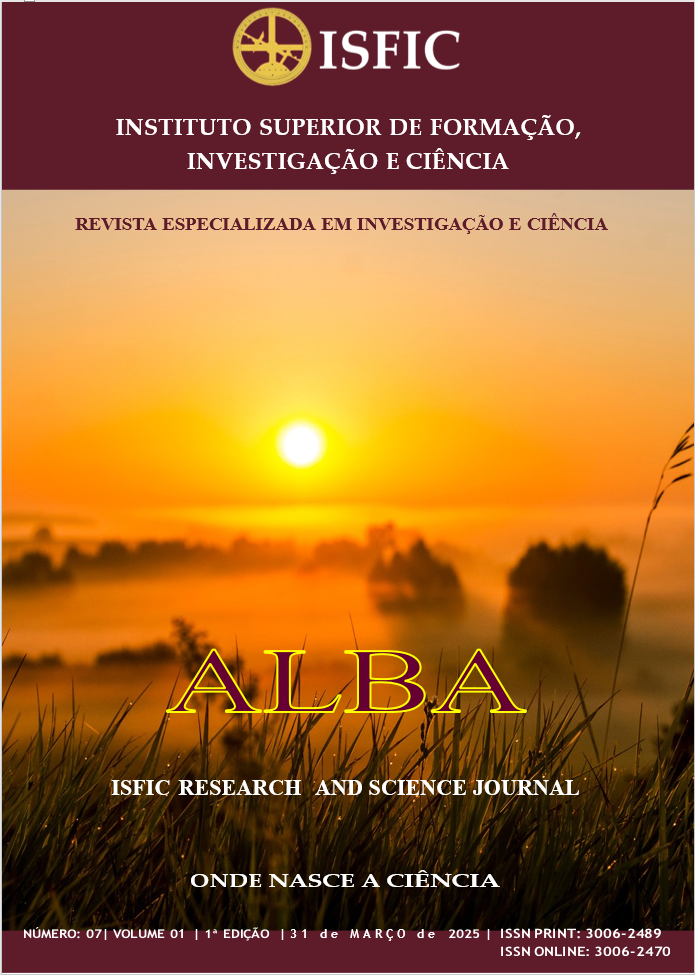Economic and financial viability analysis of de marimbando musical Project in Luanda 2024
Keywords:
Investment, cash flows, VAL, IRRs, payback.Abstract
The work takes place within the scope of a financial investment for the creation of a traditional Angolan musical instrument workshop by Academia Reino das melodias Prestação de Serviços, Lda with great emphasis on the marimba, in the first phase only the marimba and the dicanza. The economic and financial viability study is aimed at the education sector, that is, the aim is to know the profitability of the Marimbando project if implemented in the education system in Luanda, public and private. Specifically, present the main theoretical aspects regarding the study of an investment project, identify the main revenues and costs, sources of financing, interest rates and repayment terms in order to assess its profitability, and analyze the main elements supporting economic viability and financial (VAL, IRR and Payback) of the Investment project. In methodological terms, the analytical and descriptive method was used, as well as bibliographic and documentary research. The work took place in three phases, starting with generalities about the general notions of an investment project, its typology, classification, stages and evaluation. Then the description of the basic forms for evaluating the project such as investment, exploration and financing plans. Finally, the case study, where the project was presented, through the evaluation of different viability indicators, such as: CASH – FLOW, VAL, IRR and Payback. Starting with the investment made, amortizations, revenues and expenses, up to the determination of the different partial results, and compliance with the technical, economic and financial assumptions, we were able to demonstrate that it is a project with a sustainable market, technically and operationally viable for its approval and financing.
Downloads
References
Abecassis, F.; & Cabral, N. (2008). Análise Económica e Financeira de Projectos: fundação calouste gulberkian, serviços de educação e bolsas. 5ª Ed, Lisboa – Portugal.
Barros, H. (2009). Análise de Projectos de Investimento. 4ª Ed. Sílabo, Lisboa – Portugal.
Barros, H. (1991). Análise de Projectos de Investimentos. 2ª ed. Lisboa: Edições Sílabos.
Barros, P. C. (2000). Decisões de Investimentos e Financiamentos de Projectos. Edições Sílabo, Lda., 3ª Edição, Lisboa – Portugal.
Barros, T. (2008). Análise de Projectos de Investimentos.
Bastardo, C.; & Gomes, A. R. (1991). O financiamento e as aplicações financeiras das empresas. Lisboa: Texto – Editora.
Buarque, C. (1991). Avaliação Económica de Projectos: uma apresentação didática. 6ª ed. Rio de Janeiro: Campus.
Cebola, A. (2009). Elaboração e Análise de Projectos e Investimentos. 2ª Edição – Edições Sílabo, Lda., Lisboa – Portugal.
Consalter, M. A. (2012). Elaboração de Projectos: da introdução a conclusão. Curitiba: InterSaberes.
Graves, S. B.; Ringuest, J. L.; Medaglia, A. L. (2003). Models & methods for project selection: concepts from management science, finance and information technology. s.l.: Springer.
Jiménez, J. A. O. (2003) Manual de proyetos de inversión. Santa Cruz de la Sierra: Upsa.
Marconi, M. A.; & Lakatos, E. M. (2003). Fundamentos de Metodologia Científica. Editora Atlas, 5ª ed. São Paulo.
Marques, A. Concepção e Análise de Projectos e Investimentos – Edições Sílabo, Lisboa – Portugal.
Mithá, O. (2009). Análise de Projectos e Investimentos – Escolar Editora, Lisboa – Portugal.
Manual de Analise e inestimento 3 ano 2020.







